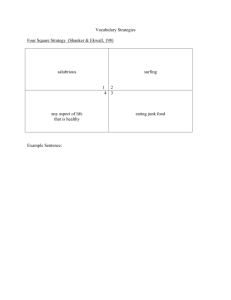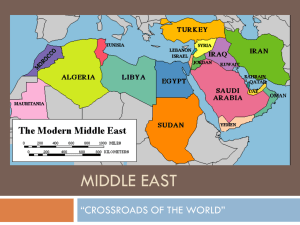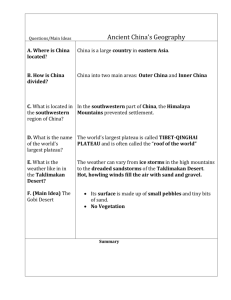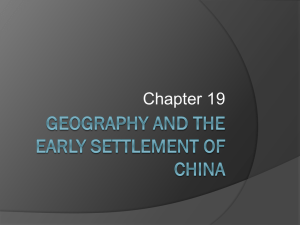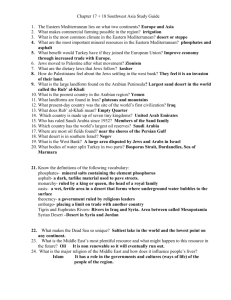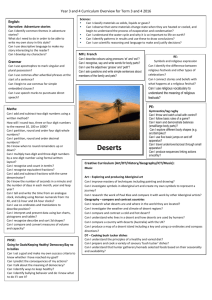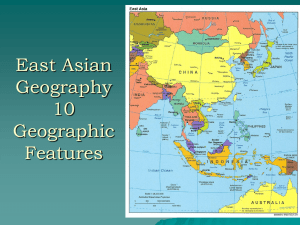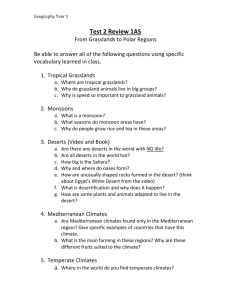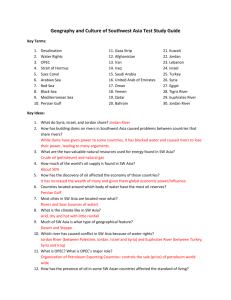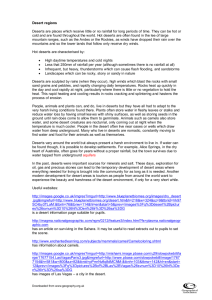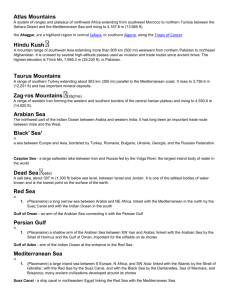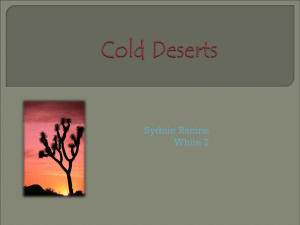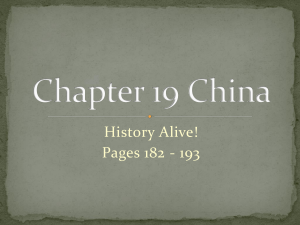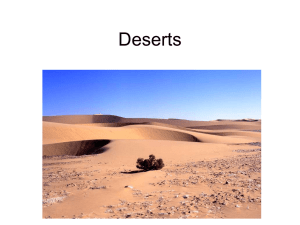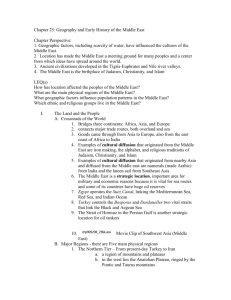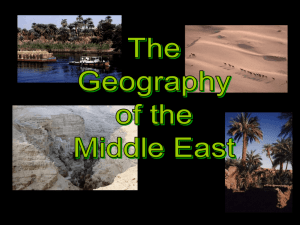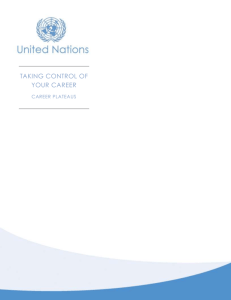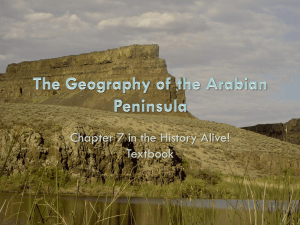Middle east Geography
advertisement
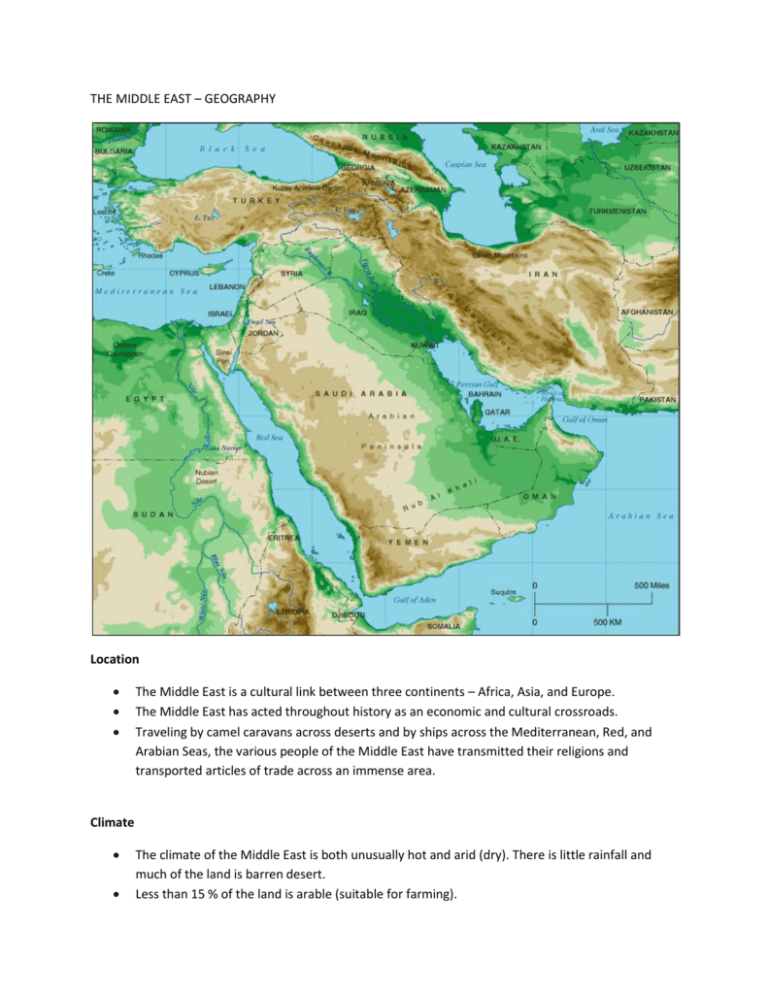
THE MIDDLE EAST – GEOGRAPHY Location The Middle East is a cultural link between three continents – Africa, Asia, and Europe. The Middle East has acted throughout history as an economic and cultural crossroads. Traveling by camel caravans across deserts and by ships across the Mediterranean, Red, and Arabian Seas, the various people of the Middle East have transmitted their religions and transported articles of trade across an immense area. Climate The climate of the Middle East is both unusually hot and arid (dry). There is little rainfall and much of the land is barren desert. Less than 15 % of the land is arable (suitable for farming). The scarcity of water limits economic development and the production of food. Resources The region is rich in oil. In the 21st century, much of the world has come to depend on the oil wells of the Middle East. Large deposits of oil, however, are found in a few nations of the region – Saudi Arabia, Kuwait, Iraq, Iran, and the United Arab Emirates. Oil has made the leaders of these nations rich. Topography The Middle East consists of plateaus, and deserts. The region has fewer mountains than most world regions. Geographically the area is very flat and few natural barriers exist to prevent the area from invasion. Plateaus. THE Asian part of the Middle East is made up of three immense plateaus. In the north, the Anatolian Plateau forms much of Turkey. In the east, the Iranian Plateau makes up most of Iran. In the south, the Arabian Peninsula is both a plateau and desert. The Anatolian Plateau receives the most rainfall and is best suited for crops. Deserts. Two vast deserts cover the Middle East. The Arabian Peninsula is a desert. The Sahara, the world’s largest desert, spans North Africa. Rivers. The Tigris and Euphrates originate in eastern Turkey and flow through Syria and Iraq before flowing into the Persian Gulf. The fertile land between these two rivers forms Mesopotamia. The Nile River in Egypt plays a central role in the lives of Egyptians. The Jordan River empties into the Dead Sea and has had a major impact on Jordan, Syria, and Israel. The land stretching from Mesopotamia to the Jordan River is known as the Fertile Crescent and was the sight of early civilizations. Strategic Waterways Location and oil has made the Middle East important to other nations of the world. Several waterways are important. The Suez Canal is located in Northern Egypt. It allows merchants ships to go directly from the Mediterranean Sea to the Red Sea and into the Indian Ocean. It allows ships to avoid backtracking around Africa. The Persian Gulf and the Strait of Oman connect the Middle East’s oil supply with the rest of the world. Whoever controls the Persian Gulf controls the oil supply. It is important to western countries to keep shipments flowing in this waterway. The Bosporus and Dardanelles are two other straits. They control the movement of ships between the Black Sea and Mediterranean Sea.

